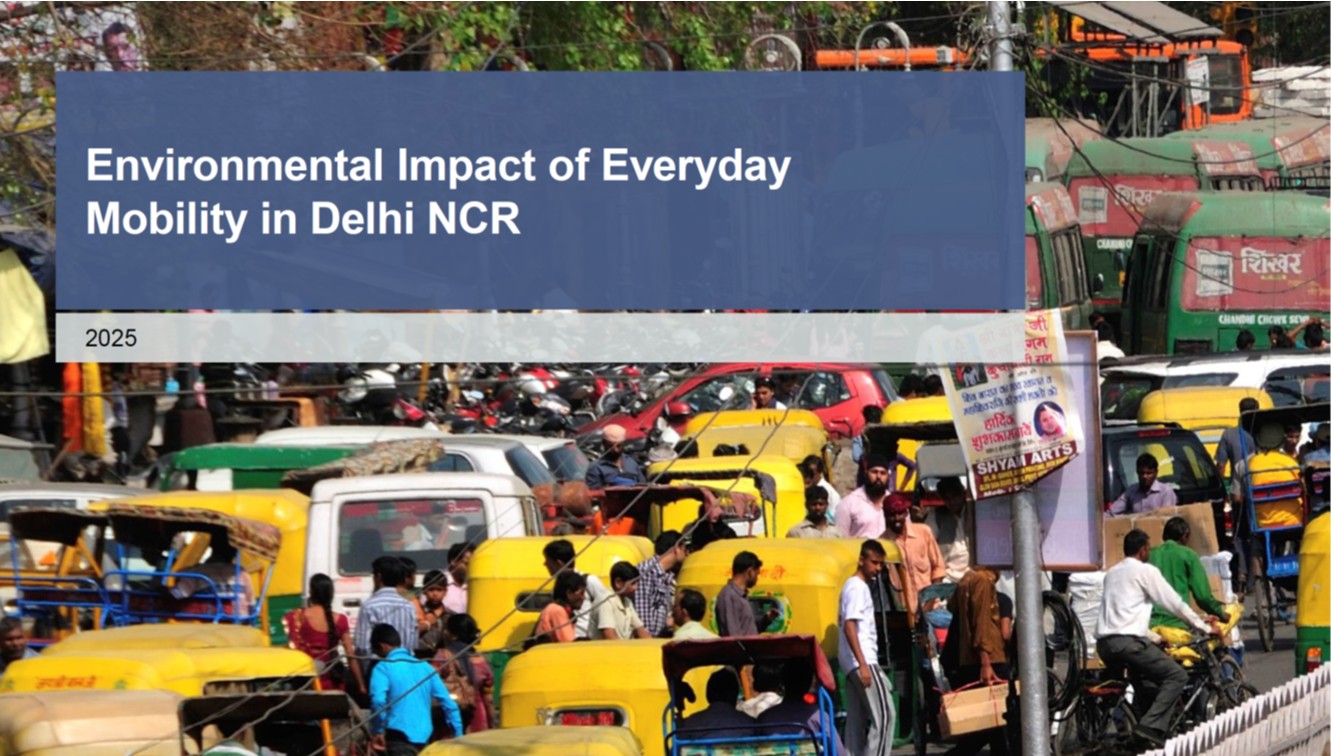
Environmental Impact of Everyday Mobility in Delhi NCR
10 mins. read | 28th May 2025
As urban environmental hazards increasingly threaten both quality of life and public health, understanding how citizens respond to these impacts has become a critical concern. Mobility, a key aspect of daily urban life, plays a crucial role in shaping individuals’ experiences within cities, yet it has often been overlooked when it comes to mitigating the harmful effects of environmental hazards.
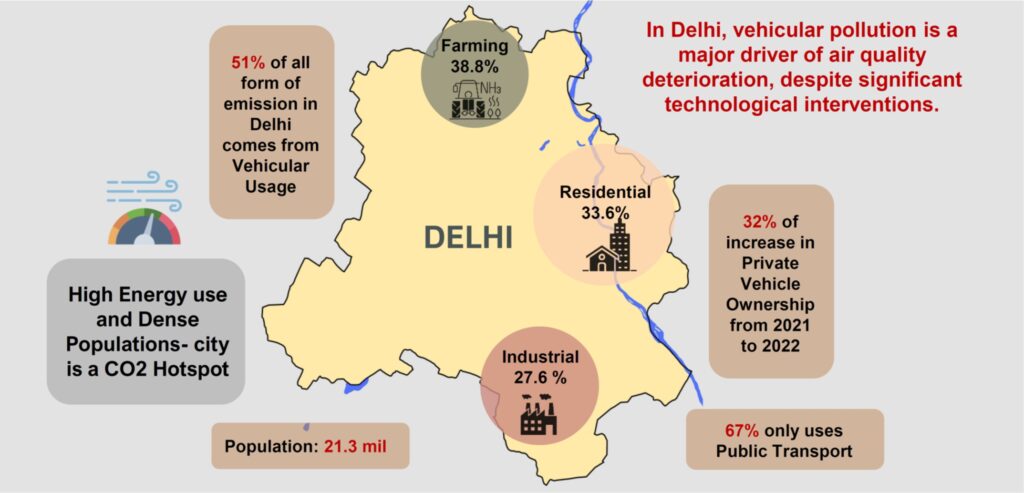
A recent analysis reveals that factors such as rapid motorization, severe traffic congestion, and inadequate public transport services are eroding the effectiveness of emission reduction measures. Despite initiatives like widespread CNG adoption, phasing out older diesel and petrol vehicles, and efforts toward fleet electrification, vehicles continue to be the primary source of pollution.
Factors Contributing to Pollution in Delhi NCR
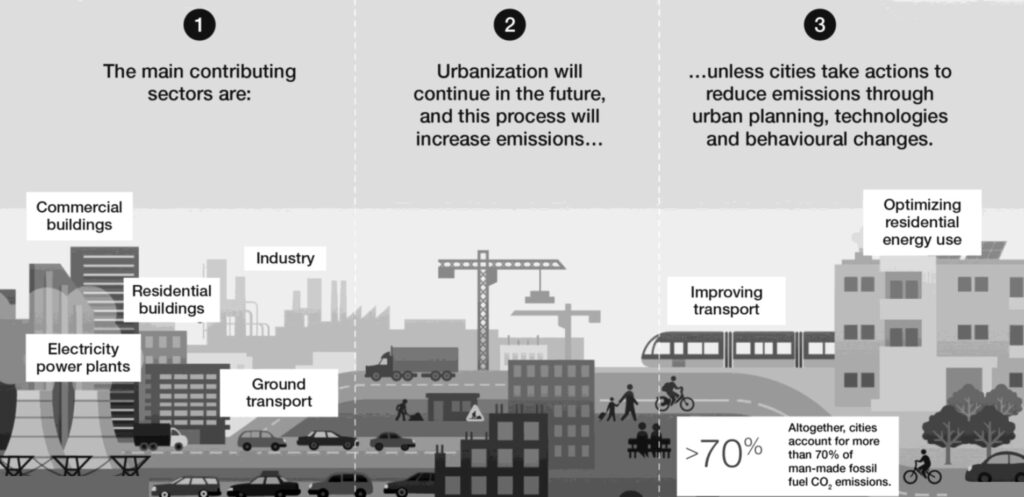
Variation in Pollution Level
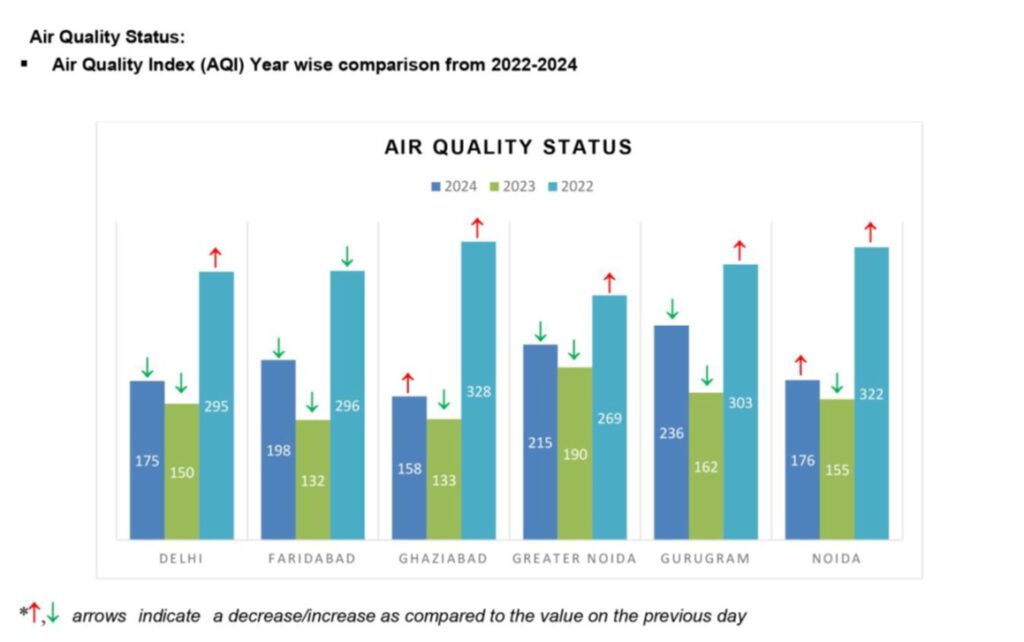
As of 2021, road transport accounts for a substantial share of Delhi’s air pollution, contributing to rising carbon dioxide (CO2) emissions and increasing concentrations of harmful pollutants like nitrogen oxides (NOx) and fine particulate matter. In 2021, road transport in Delhi contributed approximately 12% of the city’s total CO2 emissions, with the transportation sector being the largest single source of air pollution. The increasing reliance on private vehicles, particularly cars and two-wheelers, coupled with high levels of freight traffic, has resulted in significant environmental degradation, including the worsening of air quality and an escalation of public health issues related to respiratory diseases.
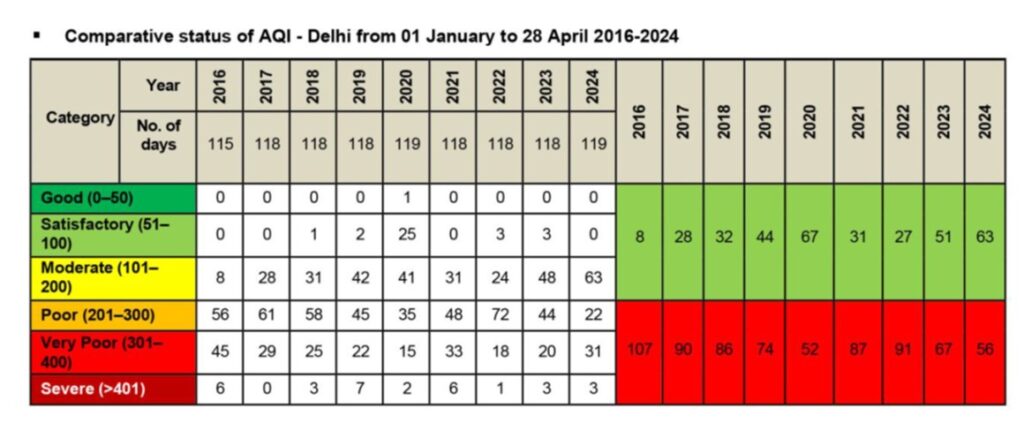
Between 1998 and 2021, air quality generally worsened, as reflected in the increase in the estimated domain average concentration of pollutants. The values rose from 81 μg/m³ in 1998–1999 to 102.3 μg/m³ in 2000–2009, 119.7 μg/m³ in 2010–2019, and 115.0 μg/m³ in 2020–2021.
usage.
This trend occurred despite efforts to improve air quality, such as stricter vehicle and fuel standards, the development of a 350 km metro system connecting satellite cities, the adoption of zig-zag technology in brick manufacturing, and the expansion of LPG
Annual average PM2.5 concentrations in Delhi for the period of 1998 to 2021
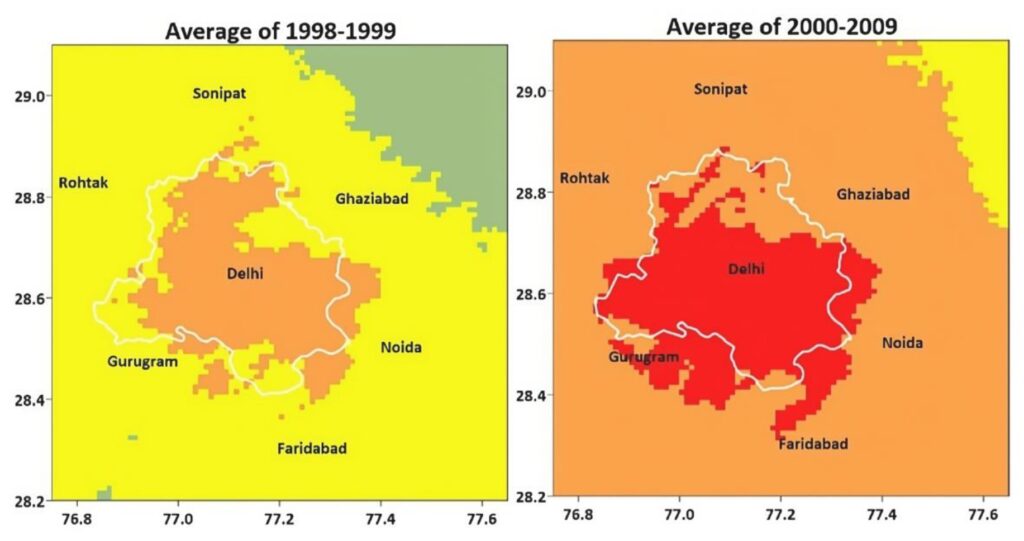
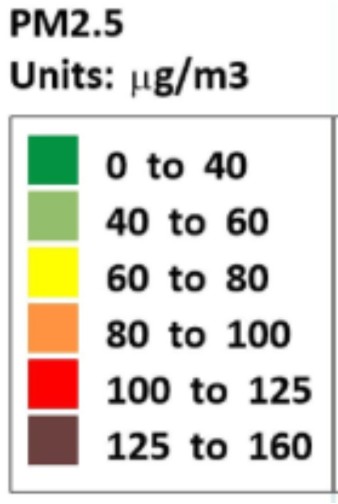
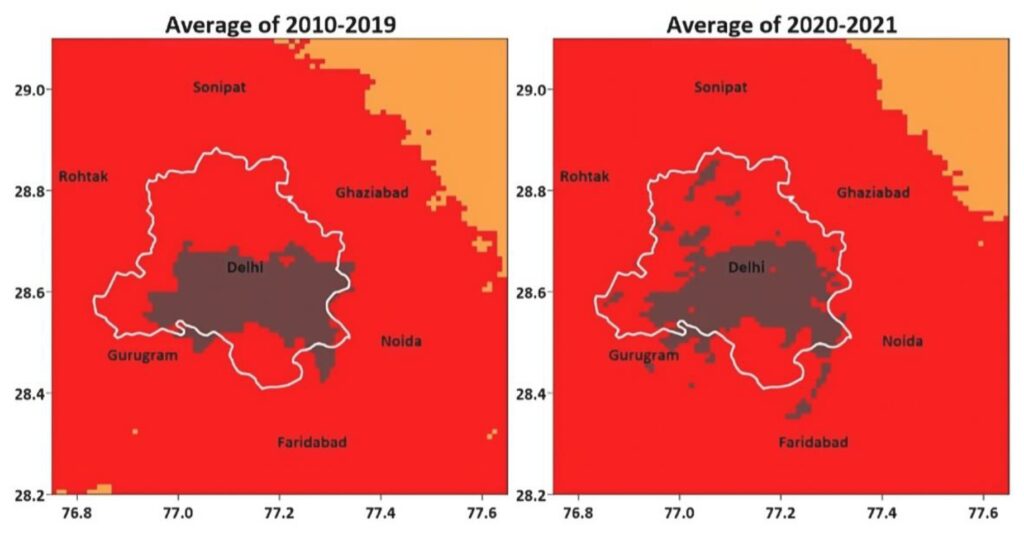

This trend occurred despite efforts to improve air quality, such as stricter vehicle and fuel standards, the development of a 350 km metro system connecting satellite cities, the adoption of zig-zag technology in brick manufacturing, and the expansion of LPG
Growth Pattern of Delhi NCR
Over the past two decades, Delhi’s population has grown from 1.39 crore in 2001 to 1.64 crore in 2023, continuing a steady upward trajectory. This population boom has spurred demand for more urban attractions, job opportunities, and, inevitably, increased travel needs.
Despite the persistent challenges of overcrowding and congestion, Delhi still struggles to adapt to the demands of its expanding populace. The question remains—which year will be where Delhi confronts its mobility crisis head-on?

What is contributing to Delhi’s pollution?

If only the local sources of Delhi are considered as the total and contributions from outside sources are excluded, then the average transport sector contribution to PM2.5 is more than half of the pollution (51.5%) from only the local sources.
This is followed by the residential (13.2%), Delhi and peripheral industries at 11%, 6.9% from construction, 5.4% from energy, 4.7% waste burning, 3.7% from
road dust, and 3.5% from other sources of Delhi.
Transportation Network
Delhi’s transportation network is an expansive and multi-modal system that extends beyond the city into the National Capital Region (NCR), encompassing road, rail, metro, and air services. At its core, the Delhi Metro is a major urban transit system, linking central Delhi with neighboring cities. Delhi’s road network, which includes highways, arterial roads, and local lanes, supports heavy traffic, exacerbated by a growing number of private vehicles, auto-rickshaws, and buses. The Delhi Transport Corporation (DTC) operates a wide range of buses. The railway network, with major stations like New Delhi and Hazrat Nizamuddin, offers vital intercity and local connectivity.
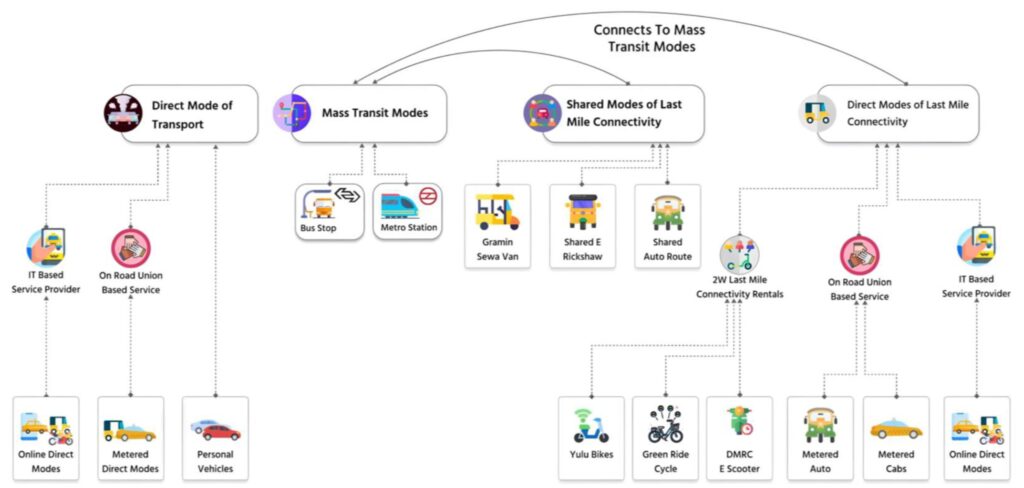

What is contributing to the mobility crisis in the city?

Registration Trend in Delhi for all Vehicles
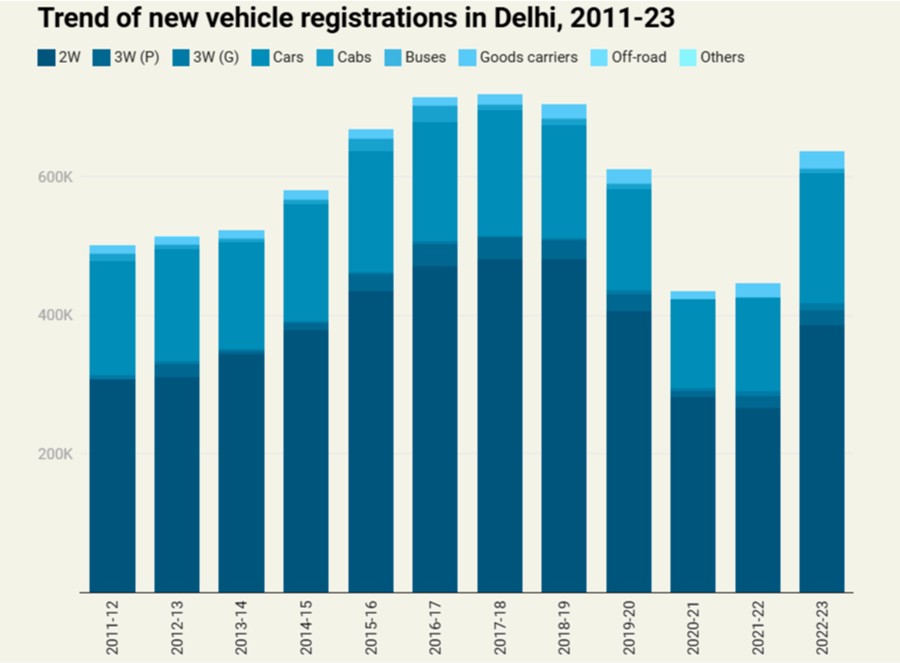
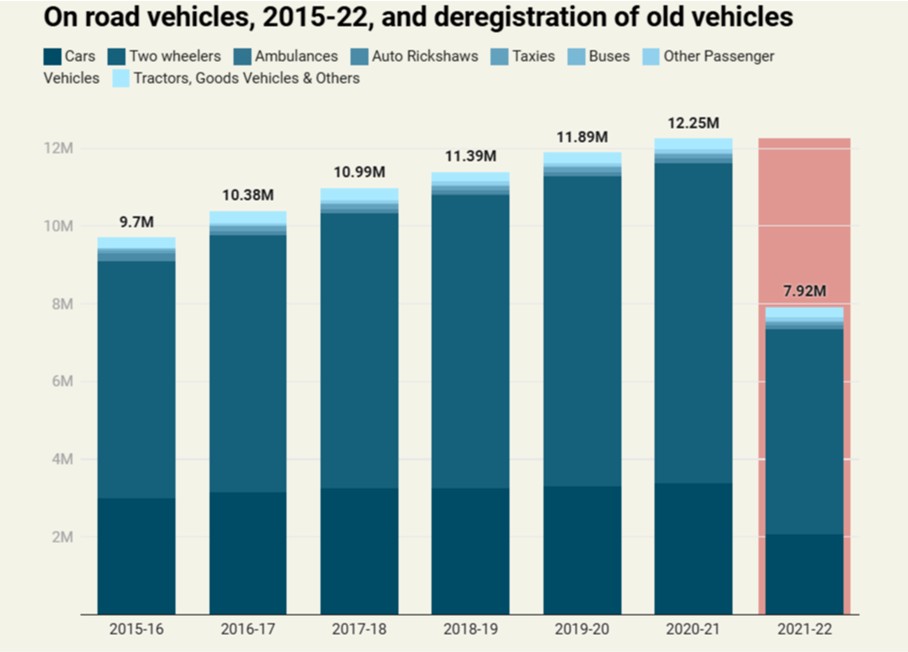
Delhi’s transportation network is an expansive and multi-modal system that extends beyond the city into the National Capital Region (NCR), encompassing road, rail, metro, and air services. At its core, the Delhi Metro is a major urban transit system, linking central Delhi with neighboring cities. Delhi’s road network, which includes highways, arterial roads, and local lanes, supports heavy traffic, exacerbated by a growing number of private vehicles, auto-rickshaws, and buses. The Delhi Transport Corporation (DTC) operates a wide range of buses. The railway network, with major stations like New Delhi and Hazrat Nizamuddin, offers vital intercity and local connectivity.
Motorisation Trend in Delhi for all Vehicles
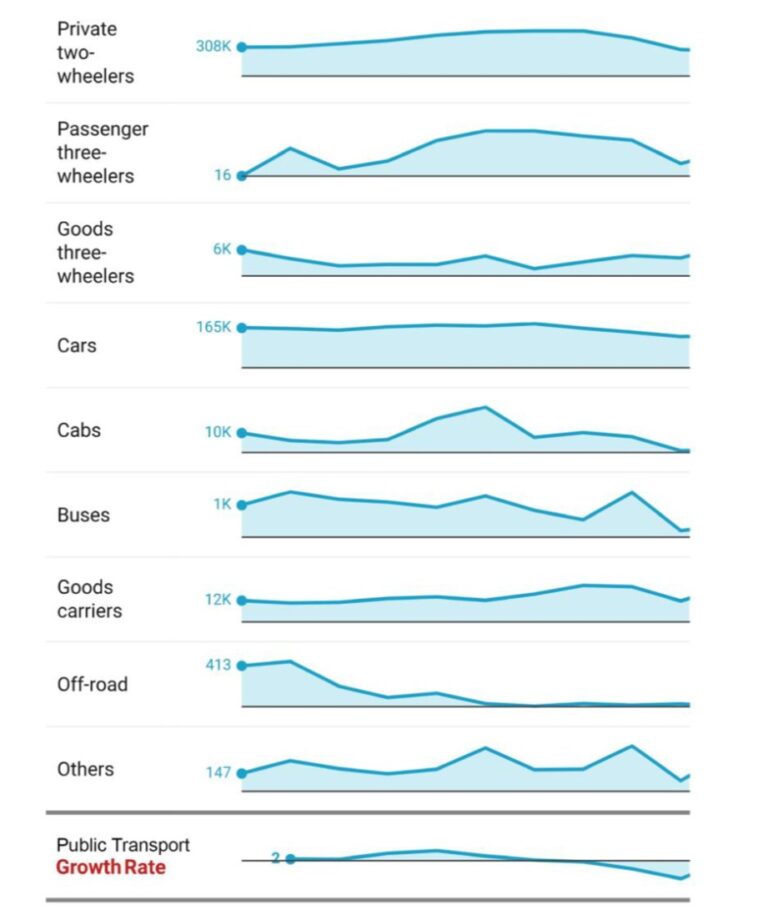
Despite its impressive infrastructure, Delhi faces challenges like congestion, pollution, and last-mile connectivity, but ongoing initiatives, such as the promotion of electric vehicles and the expansion of metro lines, are designed to alleviate these issues and enhance the region’s transport network.
Key Leverage Points for Transformational Change
1. Shared modes of last-mile connectivity
- MIG and UMIG’s need for Comfortability Modes of Transport.
- UMIG and HIG’s need for freedom and personal Space in modes of commute.
- Ease in acquiring Shared Modes.
- Ease in Usage and waiting time.
- Crowding and congestion at boarding points.
- Congestion at nodal junctions during rush hours.
- Increased Cognitive load on users.
- Number of Shared modes plying on routes
2. Direct modes of last-mile connectivity
- Crowding and Congestion around boarding points.
- Ease in usage of direct modes of last mile connectivity.
- Surcharges during peak hours of traffic.
- Cognitive load on users while acquiring the mode of transport.
3. 2W last-mile connectivity rentals
- Time taken to acquire modes of transport while going towards metro /bus stop.
- Lack of maintenance and reduced safety in vehicles present.
4. Personal Vehicle Usage
- Total number of private vehicles on road being used for direct modes of commute.
- Commuters’ willingness to use private vehicles as a mode for
travel. - Increased dependency on parking facilities.
- Illegal parking on road and sidewalks.
6. Pedestrian/ Cycling Infrastructure and Facilities
- Lack of comfortability in walking and cycling due to lack of maintenance and investment of infrastructure.
- Illegal hoarding of footpaths and sidewalks and traffic congestion.
5. Direct mode of P2P transport
- Total number of Direct modes plying.
- UMIG and HIG’s dependency on direct point to point modes of commute.
- Willingness to use point to point modes of commute.
- Increased road congestion and cognitive load on user
Shifting Trends in Motorization

Shared Mobility as a Solution to Carbon Emissions
Shared mobility solutions, such as ride-hailing, carpooling, bike-sharing, and shared electric vehicles, could reduce Delhi NCR’s road transport emissions by up to 34%, cutting overall urban emissions by 10%. By increasing car usage efficiency and reducing vehicle numbers, shared mobility helps alleviate congestion, lower fuel consumption, and improve air quality.
Conclusion: A Sustainable Future for Delhi NCR
As Delhi NCR grapples with the dual challenge of urban growth and environmental degradation, shared mobility offers a viable solution to create more sustainable, greener, and more efficient cities. By reducing vehicle emissions, cutting down congestion, and improving air quality, shared mobility can contribute significantly to a cleaner, healthier urban environment.
To realize the full potential of shared mobility, policy-makers and industry leaders in Delhi NCR must prioritize building integrated, multimodal transport systems, incentivize the adoption of electric vehicles, and invest in technologies that improve the user experience. In parallel, governments must support initiatives to bridge the digital divide, particularly in rural and semi-urban areas, enabling more equitable access to shared mobility services. With the right investments in innovation and infrastructure, Delhi NCR can lead India towards a sustainable, inclusive, and decarbonized transportation future.
Share via:

